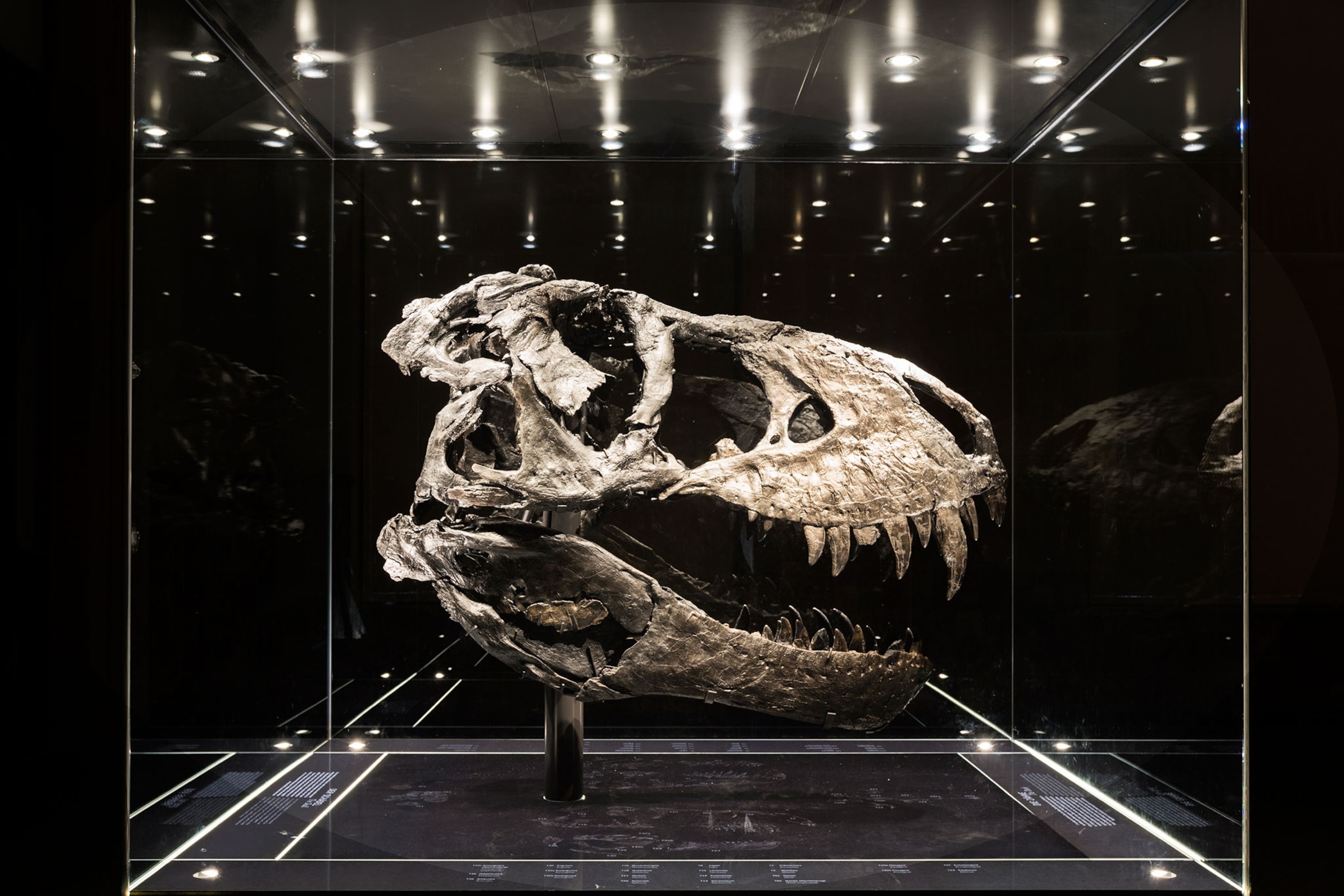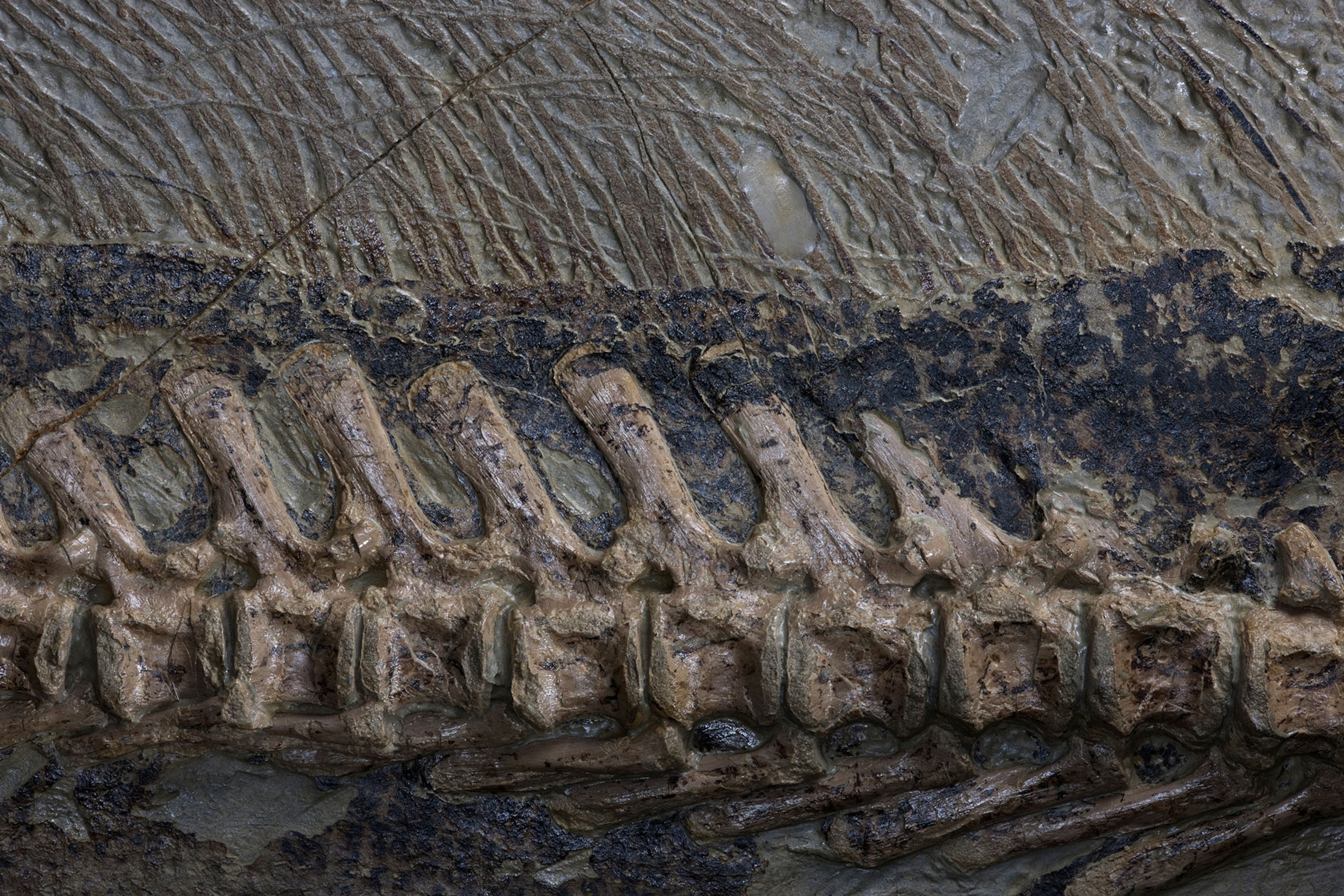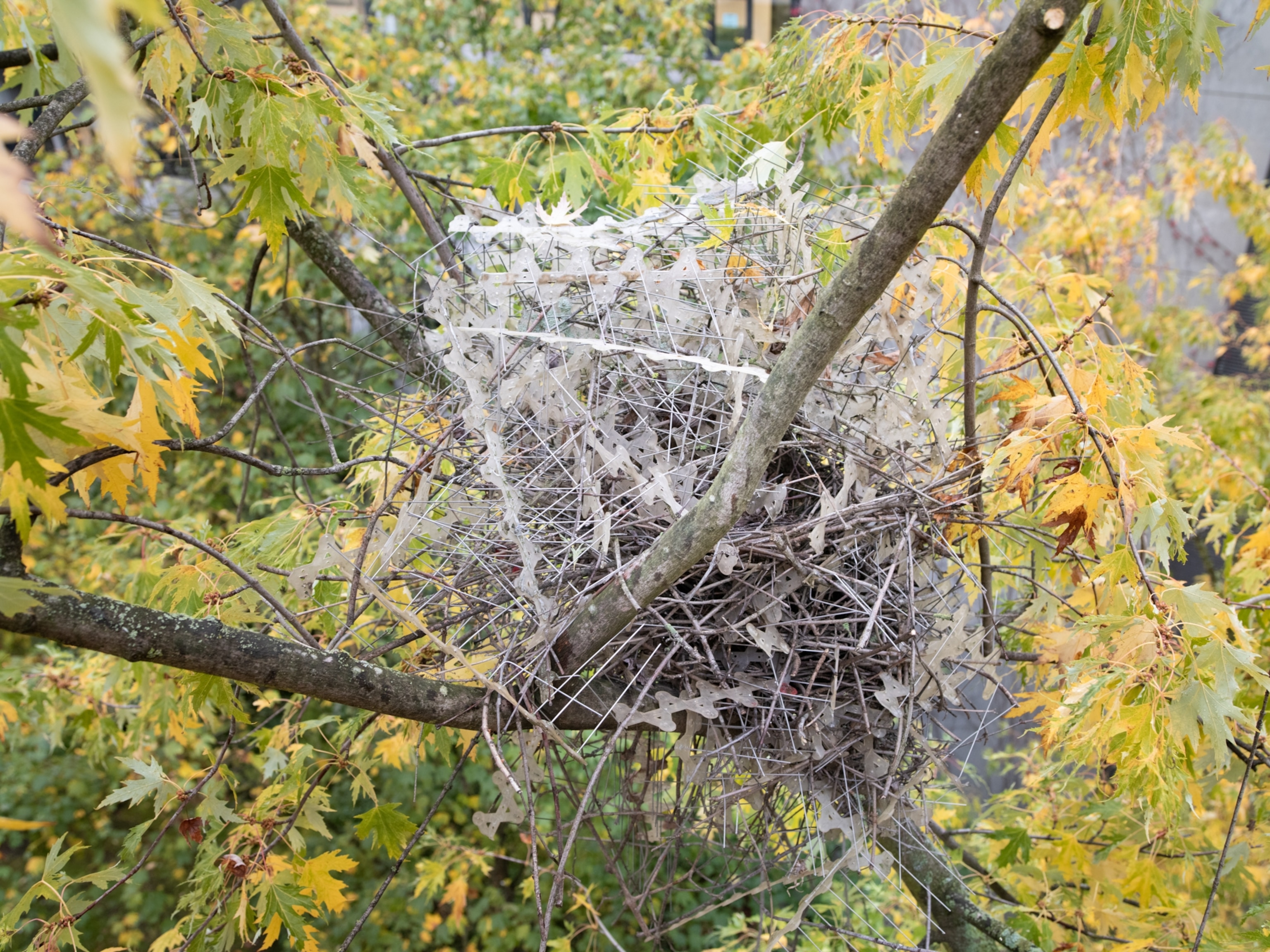About 115 million years ago in what's now northwest China, a female bird was on the verge of motherhood. But somehow, her life on an ancient lakeshore took a traumatic turn, triggering a pregnancy complication that killed the egg forming inside her and may have even led to her death.
Entombed ever since, this mother bird is now a paleontology milestone: Named Avimaia schweitzerae, the newly described species is the first fossil bird known to science that contains an unlaid egg.
“We were not expecting anything interesting, but it turned out to be the first fossil bird ever found with an egg inside its body,” says lead study author Alida Bailleul, a postdoctoral researcher at China's Institute of Vertebrate Paleontology and Paleoanthropology (IVPP). “To me, that’s the funniest thing.”
Described this week in Nature Communications, the egg could shed light on reproductive disorders in ancient birds. And if its pigments are preserved, the fossil could reveal more about how ancient birds nested. Previous research has shown that the colors and speckles on dinosaur eggshells may vary depending on the dinosaur's nesting behavior, such as whether the species buries its eggs or broods them. This pattern holds true in the only dinosaurs alive today: birds.
The discovery adds to a growing string of spectacular fossil birds unveiled in recent months. In January 2019, a team led by paleontologist Jingmai O'Connor—Bailleul's supervisor and coauthor—unveiled a pristine 99-million-year-old bird foot preserved in amber. Nearly three months before, a team led by paleontologist Julia Clarke reported on a new fossil bird so well-preserved, the patterns on its feathers are still visible.
And in December, O'Connor unveiled another ancient bird with probable medullary bone, a special type of bone found only in reproductively active female birds. Avimaia is also thought to preserve medullary bone. If so, it would be the first fossil ever found with both this bone type and an egg, providing a unique example of the link between medullary bone and avian reproduction.

This line of research traces back more than a decade, to a pioneering 2005 paper by paleontologist Mary Schweitzer that found signs of medullary bone in Tyrannosaurus rex. To honor Schweitzer's contributions to paleontology, Bailleul named the new fossil for her.
“Is that not the coolest thing ever? I was just so surprised—I’m hugely honored,” Schweitzer says.
Stumbling on eggshells
Avimaia's path to the spotlight took more than a decade. In the mid-2000s, IVPP paleontologists dug up fossils from northwest China's Xiagou Formation, which has yielded many fossils of an extinct bird group called the enantiornithines. At the time, researchers including O'Connor noticed that one of the fossils had a weird, membrane-like structure. But the team moved on and kept the fossil in storage.
In 2018, Bailleul arrived at the IVPP looking for a first project. Since her specialty is preserved soft tissues, she and O'Connor combed through the institute's storage for unstudied specimens.
“We were just going through boxes, and then [O'Connor] said, Oh, look at this, I remember this fossil!” Bailleul says. She and her colleague Shukang Zhang then began sampling the fossil and, to the team's delight, it dawned on them that the fossil's enigmatic “soft tissue” was, in fact, eggshell.
“I couldn’t even sleep at night...I was like, my god, this is an egg,” Bailleul says.
Some parts of the egg had up to six layers—which may hint at how the mother bird died. In living birds, trauma can cause a female to delay laying her eggs and instead encase it in several more eggshell layers. This “egg binding” not only suffocates the developing embryo, which researchers did not find in the fossil, but in extreme cases, it also can kill the mother.
Big secrets at small scales
Cross-sections of Avimaia bone may also show how the bird built the egg in the first place.
To help build their eggshells, modern reproductively active birds pack their skeletons with a calcium reservoir called medullary bone. In addition to T. rex, previous studies found what looks like medullary bone in pterosaur fossils. But successfully identifying fossil medullary bone is tricky; it's a temporary structure, and bone diseases can yield similar-looking tissues. This in turn makes it hard to know whether something that looks like ancient medullary bone is truly linked to reproduction.
In Avimaia, Bailleul's team found medullary-like bony layers precisely where scientists would expect medullary bone to be, and the bone surfaces don't looked diseased. Most of all, thanks to the egg, the bird's reproductive status is beyond dispute.
Schweitzer says that Bailleul's case is convincing: “At this point, what else can it be?” she says. “I'd like to see chemistry done, and maybe eventually they will get to that ... but the preponderance of evidence supports it being medullary bone.”
Avimaia's egg could yield further molecular secrets, adds paleontologist Jasmina Wiemann, a Ph.D. student at Yale. For one, depending on their arrangement, tiny crystals that Bailleul's team found in the sample could have given the eggshell a glossy sheen like the eggs of today's tinamou, she says.
Beyond shine, chemical studies could also reveal shade. In her previous work, Wiemann reconstructed dinosaur eggs' colors and speckles, which likely correspond to nesting strategies. If Avimaia's egg preserves pigments, tests could therefore reveal how the bird may have nested—and even how it raised its young.
“This is a spectacular fossil with a lot of potential for future paleobiological investigations,” Wiemann says in an email. “I would be thrilled to analyze pigment contents in this eggshell!”
Related Topics
You May Also Like
Go Further
Animals
- This ‘saber-toothed’ salmon wasn’t quite what we thoughtThis ‘saber-toothed’ salmon wasn’t quite what we thought
- Why this rhino-zebra friendship makes perfect senseWhy this rhino-zebra friendship makes perfect sense
- When did bioluminescence evolve? It’s older than we thought.When did bioluminescence evolve? It’s older than we thought.
- Soy, skim … spider. Are any of these technically milk?Soy, skim … spider. Are any of these technically milk?
- This pristine piece of the Amazon shows nature’s resilienceThis pristine piece of the Amazon shows nature’s resilience
Environment
- This pristine piece of the Amazon shows nature’s resilienceThis pristine piece of the Amazon shows nature’s resilience
- Listen to 30 years of climate change transformed into haunting musicListen to 30 years of climate change transformed into haunting music
- This ancient society tried to stop El Niño—with child sacrificeThis ancient society tried to stop El Niño—with child sacrifice
- U.S. plans to clean its drinking water. What does that mean?U.S. plans to clean its drinking water. What does that mean?
History & Culture
- Meet the original members of the tortured poets departmentMeet the original members of the tortured poets department
- Séances at the White House? Why these first ladies turned to the occultSéances at the White House? Why these first ladies turned to the occult
- Gambling is everywhere now. When is that a problem?Gambling is everywhere now. When is that a problem?
- Beauty is pain—at least it was in 17th-century SpainBeauty is pain—at least it was in 17th-century Spain
- The real spies who inspired ‘The Ministry of Ungentlemanly Warfare’The real spies who inspired ‘The Ministry of Ungentlemanly Warfare’
Science
- Here's how astronomers found one of the rarest phenomenons in spaceHere's how astronomers found one of the rarest phenomenons in space
- Not an extrovert or introvert? There’s a word for that.Not an extrovert or introvert? There’s a word for that.
- NASA has a plan to clean up space junk—but is going green enough?NASA has a plan to clean up space junk—but is going green enough?
- Soy, skim … spider. Are any of these technically milk?Soy, skim … spider. Are any of these technically milk?
Travel
- What it's like to hike the Camino del Mayab in MexicoWhat it's like to hike the Camino del Mayab in Mexico
- Is this small English town Yorkshire's culinary capital?Is this small English town Yorkshire's culinary capital?
- This chef is taking Indian cuisine in a bold new directionThis chef is taking Indian cuisine in a bold new direction































